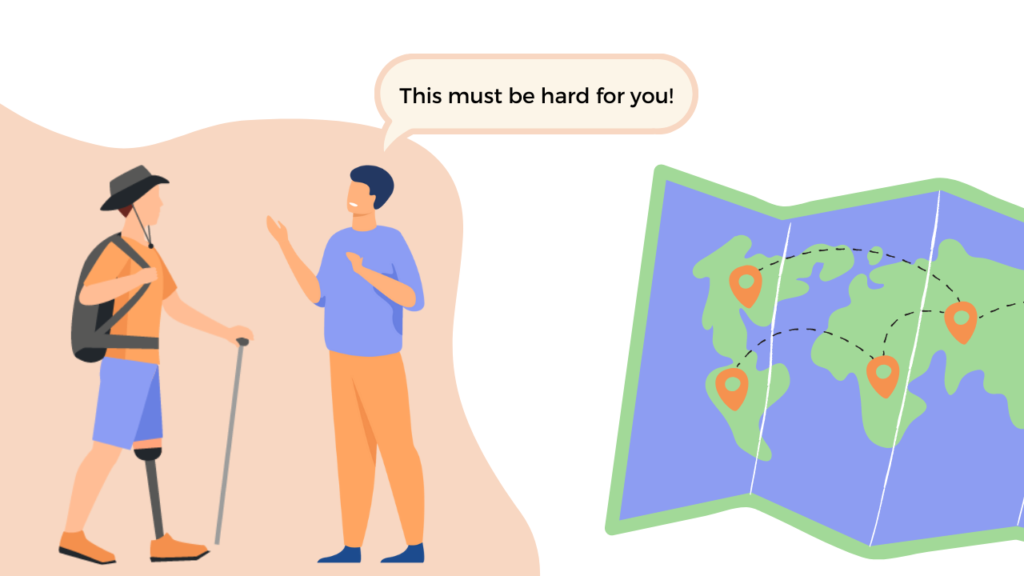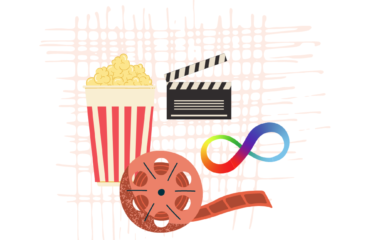
Ableism is defined as the discrimination and oppression of disabled people; the societal belief that being abled is “normal” and is preferred. It is a system of oppression that favours being able-bodied/able-minded at any cost, frequently at the expense of people with disabilities. (Stacey Milbern “Ableism is the Bane of My Motherfuckin’ Existence”). At its heart, ableism is rooted in the assumption that people with disabilities require ‘fixing’. Ableism puts people with disabilities in boxes where people are defined by their disability. Just like discriminatory phenomenons such as racism and sexism, ableism also classifies groups or communities of people as ‘less than’. This classification is brought about by harmful stereotypes, misconceptions, and generalizations of people with disabilities.
Internalised ableism. What is it?
Internalised ableism is a state in which the aforementioned frameworks of “able-bodied-ness”/ “able-mindedness” seem preferable, especially when those views are directed at one’s own self for the purposes of stringently regulating one’s physical/psychological expressions to appear more “abled”.
What are the different kinds of ableism?
Individual:
- Perpetuated by the rhetoric usage of language such as slurs
- Individual discrimination
- cases of inaccessibility
Cultural:
- Representation of people with disabilities in media
- The invisibility of disability culture and community
- The segregation of “disabled” and “able-bodied” individuals
Structural
- Architectural or Physical barriers
- Inaccessible designs pr plans
Financial & Legal:
- Low Employment rate
- Low pay per hour
- Financial constraints of receiving benefits
Medical:
- Fixing disabilities at any cost
What forms of ableist discriminationdoes the media propagate?
Disabled villain
One of the most common forms of media depiction of the disabled community is to portray villains or anti-heroes with mental or physical disabilities.
Lindsey Row-Heyveld notes, for instance, “that villainous pirates are scraggly, wizened, and inevitably kitted out with a peg leg, eye patch, or hook hand whereas heroic pirates look like Johnny Depp’s Jack Sparrow.” (via Wikipedia)
Portraying such disabilities is aimed at segregating the apple-bodied protagonist and the disabled antagonist. It almost dehumanizes the antagonist and reduces them to their disability. This leads to stigmatization and the formation of social biases against people with disabilities.
Pitied character
In many popular films and literature, a disabled person is portrayed as a pitiable characterwho. Hence,the characters are engineered in such a way that they are viewed as “less than able”. Sometimes this representation can also portray the person with disability as a “social outcast”.
Hayes & Black (2003) explore Hollywood films as the discourse of pity towards disability as a problem of social, physical, and emotional confinement. (via Wikipedia)
The portrayal of the intensity of pity is enhanced in media by a stronger focus on the individual’s weaknesses as opposed to strengths.
Supercrip stereotype
The supercrip narrative is based on the media narrative of how a disabled person “overcomes” their differences to emerge out as “stronger” and “more successful” characters.
In Thomas Hehir’s “Eliminating Ableism in Education,” he uses the example of a blind man who climbs Mount Everest as an example of the supercrip narrative. (via Wikipedia)
This narrative is quite harmful as it presents disability as a challenge that the character must “overcome” to be accepted as “normal”. It glamorises the individuals who “succeed” in overcoming their disabilities and takes away the spotlight from the struggles of people who have to live with theirs.
What are ableist micro-aggressions?
Micro-aggressions can be defined as the regular verbal or behavioural expressions that individuals use to communicate a negative slight or insult regarding someone’s gender identity, race, sex, disability, etc.
- “You are lame.”
- “Wow, so retarded.”
- “That person is crazy.”
- “Stop acting bipolar.”
- “Are you done with your meds?”
- “It’s like the blind leading the blind.”
- “My ideas fell on deaf ears.”
- “He is such a psycho.”
- “I’m super OCD about cleanliness.”
- “Should I pray for you?”
- “ Hey, we don’t even think of you as disabled.”
Usage of able-ist phrases like this often implies that a person with disability is inferior to an able-bodied person. As a result, this reinforces the notion of “curing” or “fixing” a disability to be deemed normal.
What can an individual do?
- Incorporating and advocating for accessibility in your job:
- Try adding Image Descriptions to photos on social media.
- Try knowing about laws and policies.
- Advocating for accessibility on campus and while planning programs and events.
- Never disturbing a service dog or someone’s assistive device.
- Do not offer help before asking.
- Advocating the concept of inclusion with friends, children, work colleagues, etc.
- Appreciate disabled people for their talents.
- Support retailers or organisationbs that support disabled people.
- Volunteer with organizations related to disability.
- Donate to organizations run by disabled people.
- Vote for candidates who support inclusive policies
- Above all, be more aware of lesser-known conditions and invisible disabilities
- Try teaching about neurodiversity and human diversity
- Hold public discussions.




You must be logged in to post a comment.